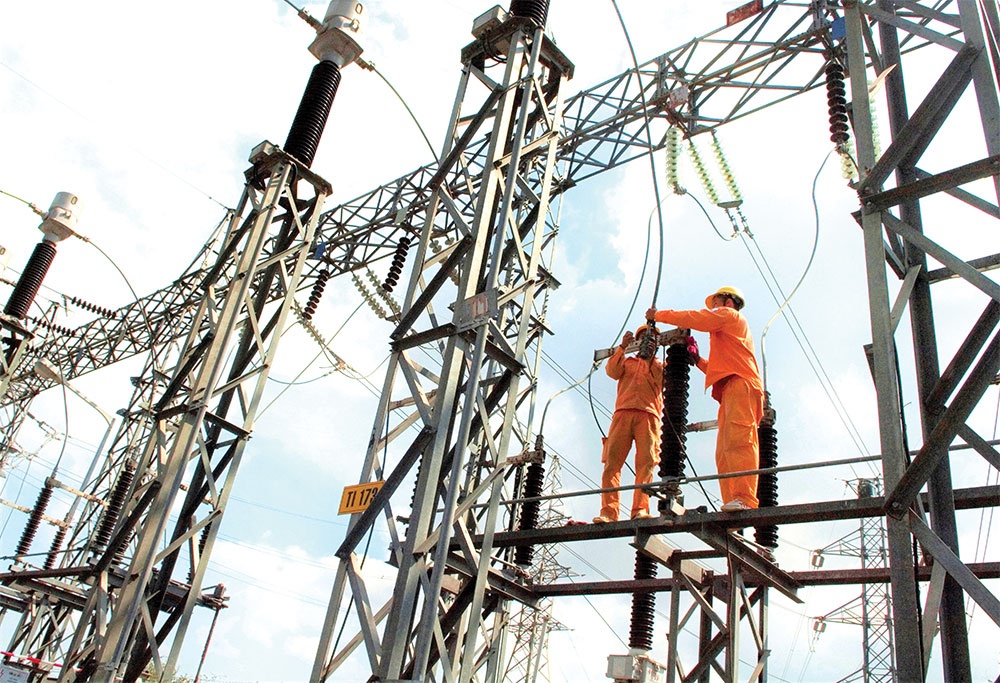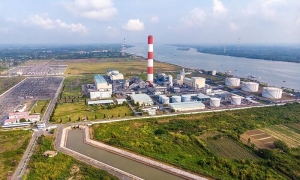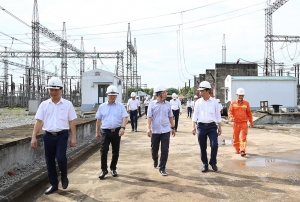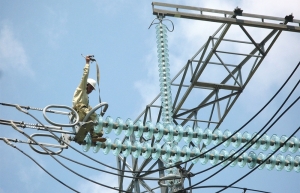Secure energy heads up acute concerns
 |
| Hot weather and drought are part of the reasons for worries over electricity shortages in the near future, photo Le Toan |
Prime Minister Pham Minh Chinh said in mid-May that the total capacity of power sources in the national power system could meet the total demand, and there was no shortage in the long term. However, there could be short-term difficulties due to the intense heat causing demand for electricity to increase, and drought reducing the amount of water in hydropower reservoirs. Meanwhile, coal imports from Indonesia are slow and do not meet the needs of thermal power plants.
The PM requested that enough coal be supplied to domestic thermal power plants by the Vietnam National Coal-Mineral Industries Holdings and Dong Bac Corporation. He urged Vietnam National Oil and Gas Group to ensure the supply of fuels for oil- and gas-fired thermal power plants, saying that thermal power plants that use imported coal should take steps like borrowing and repurchasing coal
Electricity of Vietnam’s (EVN) coal-fired power plants are facing a shortage of up to 1.3 million tonnes of coal. According to the General Statistics Office, Vietnam imported 11.97 million tonnes of coal worth $2 billion in the first four months of the year, up 25.6 per cent in volume but down 15.3 per cent in value from a year earlier.
With hydropower output negatively impacted by the hot, dry weather in May and June, northern Vietnam is expected to experience a power shortage of 1,600-4,900MW.
According to EVN, the hot weather led demand for electricity in mid-April to be 5 per cent higher than expected at 823 million kilowatt-hours. Between May and July, demand is expected to rise by 15 per cent on-year. If water levels drop at hydropower dams, the northern region could experience a 1,600-4,900MW power shortfall.
During the summer, the north consumes more energy than the southern and central regions, but there have not been many new power plants built in the north recently. Although there are many new projects in the central and southern regions, they are unable to transport much power to the north due to technical limitations.
The prime minister has asked ministries and agencies to engage in negotiations with wind and solar power projects that are ready to be connected to the national grid, with provisional pricing.
Deputy Prime Minister Tran Hong Ha has also asked the Ministry of Industry and Trade (MoIT) to study a pricing mechanism similar to that applied to build-transfer (BT) transport projects for wind and solar power projects that missed out on preferential feed-in tariffs (FiTs).
“The pricing mechanism may be similar to that applied to the BT projects in the transportation sector, with independent audits and an acceptable profit level to ensure investment motivation for developers,” he said.
A total of 84 renewable energy projects that have a combined capacity of more than 4,600MW are now behind schedule. Of them, 34 transitional projects with a combined capacity of around 2,100MW (28 wind and six solar) have been put into operation.
These projects must negotiate energy rates with EVN under a price bracket for power generating the MoIT established earlier this year, with costs 20-30 per cent lower than before. These projects will not receive FiTs for 20 years.
Investors suggested that a government official preside over a meeting of the MoIT, EVN, other ministries, and investors to work out a strategy to quickly connect renewable projects to the national grid. Such possibilities are based on investment costs, the state of the projects, and investor financial capacity. Investors are prepared to work with the ministry and other government organisations to manage production.
Thanks to FiTs and other mechanisms, Vietnam has attracted both domestic and foreign investors in the energy sector. Renewable energy has accounted for 27 per cent of the installed capacity of the overall power system during the last three years.
According to EVN, this is a significant supplementary source of electricity supply, satisfying the present high demand with an estimated 10 per cent annual growth rate. Lessons have been learnt in terms of the grid, renewable energy financing, and planning, it said.
According to PwC’s Global M&A Industry Trends Outlook for 2023, the energy transition will continue to be a focus for investors and management teams in terms of energy, utilities, and resources, with significant amounts of capital going towards mergers and acquisitions and other capital project developments.
 | PetroVietnam to take over two gas-fired power projects from EVN PetroVietnam is approved to take over the two gas-fired power projects from EVN: O Mon III and IV. |
 | EVN strives to ensure stable electricity supply for the north The North-South 500kV transmission line plays an important role in ensuring electricity for the northern region as the power supply is limited, the water falling into the hydropower reservoirs is exhausted, much of the lake water evaporates, and the electricity demand in the hot season skyrockets. |
 | Neighbourly efforts in tow to aid electricity prospects Vietnam intends to boost its imports of electricity from Laos and China in order to avoid an electricity shortfall this summer. |
 | People, enterprises save electricity in prolonged hot weather Nguyen Thi Hoa, who lives in Tay Ho district in Hanoi, has actively reduced her electricity usage over the past two months. |
What the stars mean:
★ Poor ★ ★ Promising ★★★ Good ★★★★ Very good ★★★★★ Exceptional
Related Contents
Latest News
More News
- Heavy industries set for pilot greenhouse gas quotas (December 25, 2025 | 10:00)
- Swedfund invests in MSME growth and climate action in Vietnam (December 19, 2025 | 11:42)
- GreenYellow brings solar energy to light up remote schools in Tuyen Quang province (December 19, 2025 | 08:00)
- Charge+, Grab partner to develop EV charging network in Vietnam (December 18, 2025 | 17:11)
- Linking sci-tech and innovation to Vietnam’s net-zero future (December 18, 2025 | 14:31)
- Driving double-digit growth through green and circular transformation in Vietnam (December 17, 2025 | 09:00)
- Standard Chartered and ACCA deepen collaboration to develop Vietnam’s talent for a sustainable future (December 15, 2025 | 18:18)
- Schaeffler reports strong early output from Dong Nai solar project (December 12, 2025 | 15:16)
- Forestry conference highlights biodiversity and sustainability goals (December 09, 2025 | 13:35)
- Home Credit honoured among top 10 sustainable companies in trade and services (December 09, 2025 | 12:18)

 Tag:
Tag:



















 Mobile Version
Mobile Version